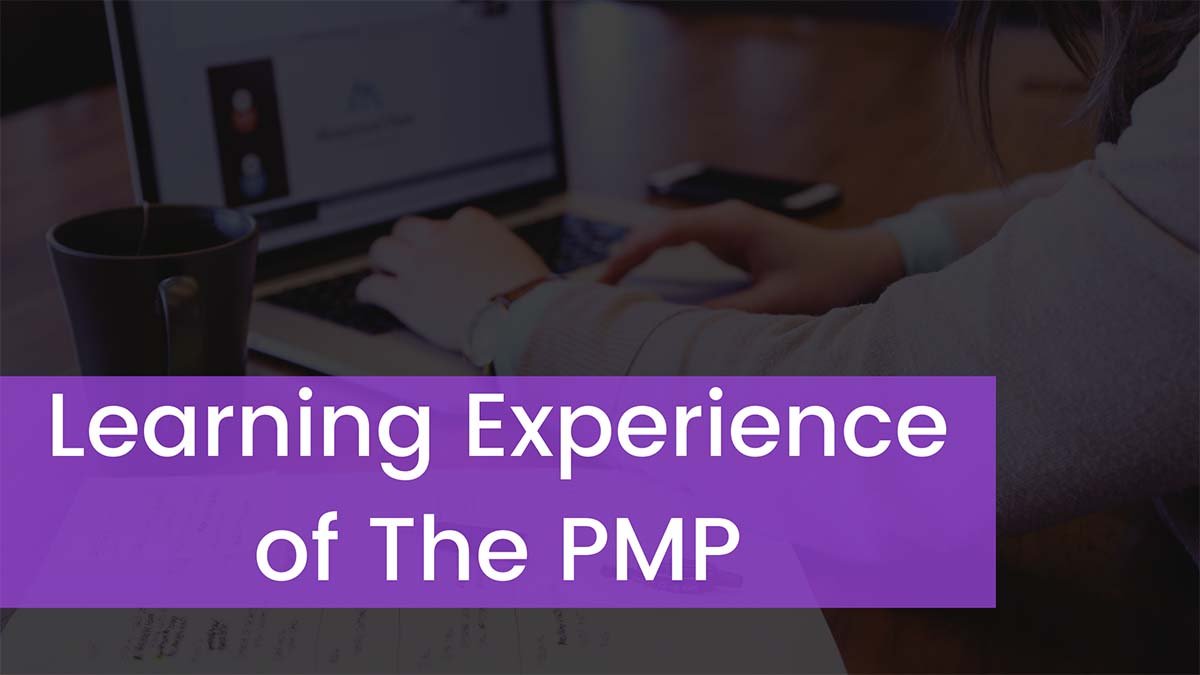As for the PMP, I first learned about it from my direct supervisor. Due to my work, I realized the importance of both soft and hard skills in project management, so I decided to learn the PMP, hoping to combine theory with practice effectively to change the fixed thinking in the past and gradually improve my project management ability so that I can make what I say and do what I do reasonably.
The most important step in learning PMP is, of course, the choice of the training institution. As for myself, through understanding and recommend of my leaders and colleagues and the inquiry on some training institutions by the Internet, I finally choose an institution called SPOTO after comparing them. At first, there is fear and worry in my heart to pay money to sign up without much attention from this institution because learning the courses, learning materials, and the learning results may have no guarantee. Finally, I found that I really consider too much.
As I enter this class, I am addicted to the strong learning atmosphere established by the teachers and the students here. The teachers are in charge of our logistics support and instant service. They are in charge of a series of big and small affairs like transferring classes, rebuilding or making up the test, registering, collecting data and important tips, organizing live courses and so on. And I just focus on learning. At this point, I began to take a learning war here for nearly three months. In the end, I not only get the score of 5A as I hoped, but also make the acquaintance of many like-minded friends. Here I particularly want to say that “learning alone without friends is lonely and unheard”.
Here is my own learning experience:
1: It is difficult at the beginning and you need to stick to it.
The so-called saying is “All things are difficult at the beginning”. Learning PMP is not an exception. But at the beginning you can set up a good foundation and then work hard to stick to it then you can get the inevitable harvest. I may be a very typical kind of person who does not want to read a book. As soon as I open a book, I will be sleepy and fall asleep quickly. It is a shame that I seldom read a book. Most people get the PMBOK, and the first reaction is too thick. How to read it? Open the book and force yourself to read it. However, it can not be understood totally.
In fact, don’t be panic and don’t be upset. First, according to the teacher’s guide to prepare for the exam, I will listen to the course through the class video. After the first quick pass, I will have an understanding of the overall knowledge framework, and then I will pass the second quick pass to deepen my impression. And then I will pass the third quick understanding. Then go to the reading part. Watch the explanation of the teachers of SPOTO to pass a quick understanding of the explanation and read again the second time.
Then you can move to the PMBOK. As for the PMBOK, my personal idea is that you can choose to read or give up it, mainly to vary from person to person. Of course, if you have the time to read, you can read. If you do not have the time, you can give up reading it. But you must use it as a dictionary book. Especially in the last stage of practicing simulation examination questions, if you meet with the knowledge which is fuzzy and confusing, you should make full use of the PMBOK to check and talk with your classmates in the study group as a type of thinking learning.
There are two points to the emphasis on doing it many times fast rather than once slow. First of all, the whole knowledge system is very important, and you should have its framework in your mind. If not, the knowledge you have learned will be scattered, not to mention that the forty-nine subprocedures, ten knowledge fields and five PMP process groups are basically overlapping rather than independent. Therefore, you should first put the large knowledge system into your head, and then study the knowledge points in the system.
Second, the book is very thick and the knowledge points are in a great number, and every sentence in the book is likely to be the test question or test points. You may have forgotten almost the past half of the book when you read half of the book if you take the slow reading way. And it is estimated that there are few knowledge points left to stay in your mind at the end of the days of reading the whole book completely.
It will be difficult at first, and it may be boring. But with a little persistence, you will love the feeling of enrichment and effort. For memory, you must understand the knowledge points on the basis of the understanding. Situational questions are in the majority in the test. As for the concept questions, I haven’t seen this in the exam in my impression. But all the situational questions judged and stripped can be summed up in the concept questions. So you must master the real understanding of the knowledge points to analyze the related content and understand the questions to select the best answer.
2: Work is busy so you need the determination of learning.
In fact, time is not the main problem. The main problem is how much determination we have to learn the PMP to obtain the PMP certificate. If we are determined enough, we can naturally squeeze out time to learn. In the view of the learning program, if we set up a plan to study, then we can learn it well. However if we do not prepare a plan of studying, then we may fail in learning the PMP well.
If you want to follow a more reasonable rhythm and don’t fall into a panic mood before the examination, then you have to set up your own learning plan in advance to control your finite time to use the time in a fully effective way. You can follow the steps of the training institutions: resolutely carrying out your study plan+ compressing the time to study hard+ listening to lectures+ reading + finishing the exercise+ thinking and learning the problems in your study group. Then you can pass the exam without any problem.
3: Analyze the questions from multiple angles
In the study group, students actively discuss questions in the class, and they have a lot of ideas which can be used for reference. Students have a lot of problem-solving ideas which are different from the teachers, and sometimes they can make you suddenly understand a problem. For example, I have been confused between the weak matrix organization and the functional organization structure. After listening to the teacher’s explanation and reciting the concept again and again, I still make mistakes when finishing new questions. My classmates pointed out that if the question stem emphasizes no power and then it is the functional organization structure. If it requires the functional manager’s permission, it is the weak matrix organization. This makes me know very clearly how to choose and how to analyze the expression of the question stem without entanglement.
4: Give up the calculation questions appropriately
When I learned the calculation questions, I listened carefully to the teacher’s calculation video lesson and followed up to finish every exercise question. The calculation questions of depreciation are indeed very complicated, and I was afraid that I would not be able to answer the questions in the examination without careful analysis, which made me very upset. Learning group sharing a message to let me give the calculation questions a new position. Don’t waste your time on a complex calculation question.
When you give a lot of time to calculate and it may be still wrong. Then just give up. After all, the calculation question only cost you one point. And some easy questions which may only take you one second to figure out are likely to lose points because of your carelessness. It’s a shame. So we emphasize that when we finish the questions, especially for the easy questions, we need to make sure that we can make them all right. The calculation questions of the earned value analysis and the communication channels are not difficult, but the complex calculation questions need to appropriately given up. At the same time, I need to tell everyone: the calculation questions of the PMP are really easy.
5: Relax and be confident before and during the examination
Don’t be panic before the exam, and relax to treat as the normal. Even if you do not have a good master of the knowledge points. As far as I am concerned, most of the questions are the situational questions in this exam, and some questions have been read at least twice. Some questions can not be understood. Some questions can not be analyzed the knowledge points. And I can’t figure out what the knowledge points some questions tend to test. I am not sure the correct options of some questions.
And I found the questions of the agile development have a little large amount (the number of this kind of questions >10) probably because of the revision of the textbook. Unexpectedly, my speed of finish this examination is much faster than usual (the costing time of the exam is 2 hours and 20 minutes without filling in the answers, but at ordinary times the costing time of the simulation exercise is 3 hours which is 180 minutes at least). What’s more, the muddleheaded state makes me lose the confidence to pass the exam, let alone the score of 5A.
But in the end, it turned out to be a satisfactory result. I recall the learning process and find that I can obtain a good result depends much on my attitude. Even I entered the examination room with my mind calming down. Although there are a lot of doubts about the questions in the examination, I am confident about my choice. In the examination which takes me about four hours, I wasn’t nervous and panic. I didn’t consider the result is good or bad. At that time I finish the only thing: relax and be confident to answer every question. So, if we decide to study PMP and take the exam to get the certificate, then we should prepare well before the exam, strengthen our confidence, relax our mind and treat those four hours with the best mental state.
SPOTO is really a professional organization, and the headteacher is dedicated, and the class is full of excellent students. The three months of study have been a wonderful experience and memory for me since I had graduated from the SPOTO. Thank you for gathering here to hear about my experience. Thank you, my classmates, for being able to accompany us to continue walking. And thank you, the teacher of the SPOTO ~




